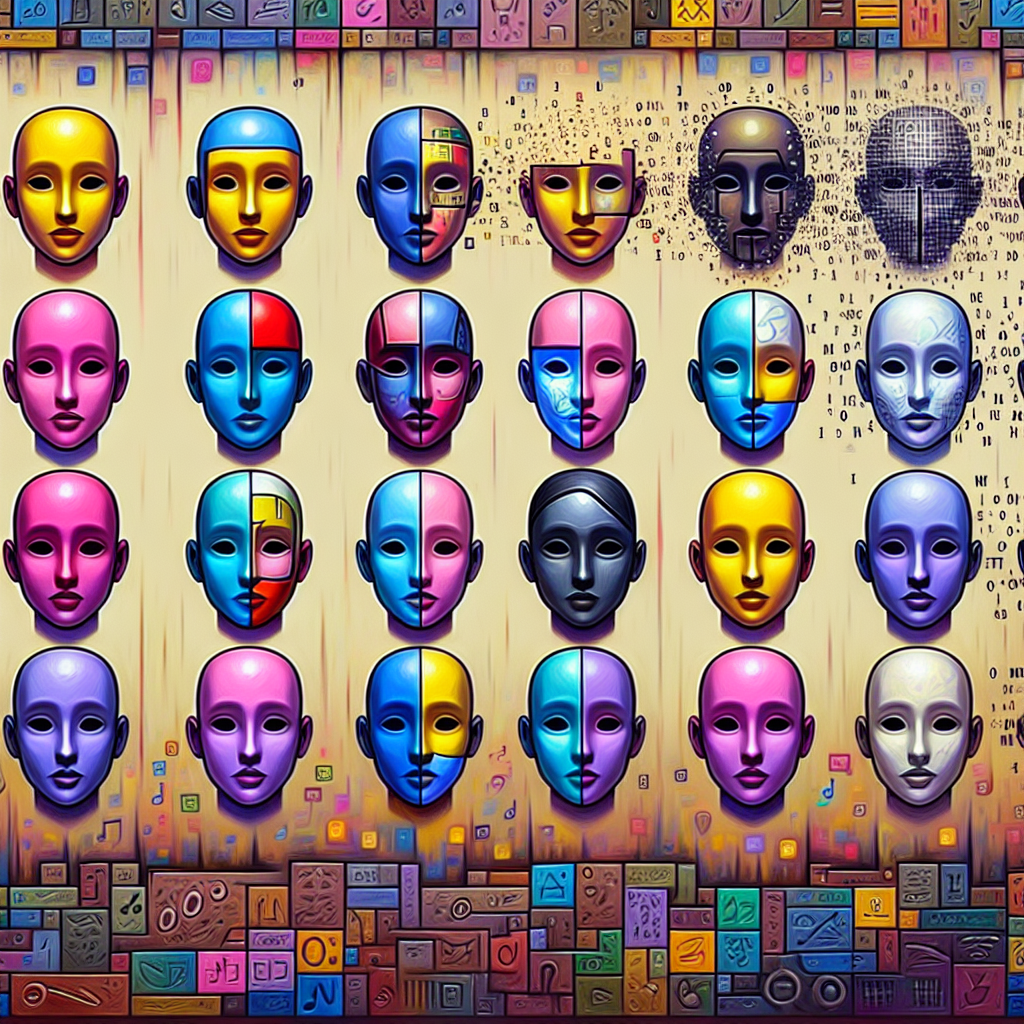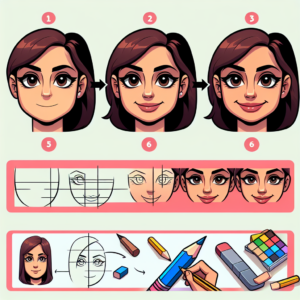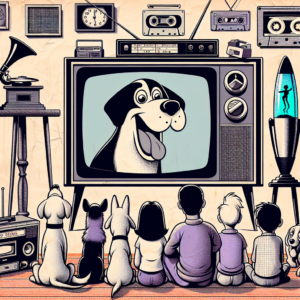Imagine scrolling through your social media feed and coming across a series of cartoons – each uniquely different yet eerily similar. These faceless characters seem to be everywhere these days, from profile pictures to album covers, creating intrigue and curiosity among viewers. But what do these faceless cartoon portraits really mean? Are they just a passing trend, or is there a deeper symbolism behind their creation?
In this article, we delve into the world of faceless cartoon portraits, exploring the meaning behind this popular art form and decoding the symbolism hidden within these seemingly simple yet intriguing images. Join us on this journey as we uncover the secrets behind the faceless characters that have captured the attention of millions around the world.
The Rise of Faceless Cartoon Portraits
Faceless cartoon portraits have been gaining popularity in recent years, with artists and creators using this unique style to convey a wide range of emotions and messages. These portraits often feature characters with blank faces or simple, abstract designs, leaving room for interpretation and imagination. But why has this trend become so popular, and what does it say about our society?
One of the key reasons for the rise of faceless cartoon portraits is their ability to convey universal themes and emotions. By removing facial features, artists can create characters that are relatable to a wide audience, regardless of age, gender, or background. This universality allows viewers to project their own emotions and experiences onto the characters, creating a sense of connection and empathy.
Furthermore, the faceless nature of these portraits can be seen as a rejection of traditional beauty standards and societal norms. In a world where appearance is often prioritized over substance, faceless cartoon portraits serve as a reminder that true identity and worth come from within, not from outward appearances. This message resonates with many people who feel pressured to conform to society’s expectations, offering a sense of liberation and empowerment.
The Symbolism Behind Faceless Characters
But what exactly do these faceless cartoon portraits symbolize, and what deeper meanings do they hold? While the interpretation of these images is subjective and open to individual perception, there are several common themes and symbols that can be found in many faceless characters.
One of the most prominent symbols in faceless cartoon portraits is anonymity. By removing facial features, artists create characters that are devoid of personal identity, allowing viewers to project their own thoughts and emotions onto the image. This anonymity can serve as a reflection of our increasingly digital and disconnected world, where personal interactions are often mediated through screens and avatars.
Another common symbol in faceless characters is ambiguity. Without facial expressions to convey emotions, these characters often exude a sense of mystery and intrigue, inviting viewers to interpret their actions and motivations. This ambiguity can be a reflection of the complexities of human nature, where emotions and intentions are not always easily understood or defined.
Additionally, faceless cartoon portraits can symbolize universality and inclusivity. By creating characters that are devoid of specific features, artists can appeal to a wide audience and convey messages that resonate with people from diverse backgrounds. This universality creates a sense of connection and empathy, fostering a greater understanding and appreciation of human diversity.
Interpreting Faceless Cartoon Portraits
When interpreting faceless cartoon portraits, it is important to consider the context in which the images are presented. Artists often use this style to convey specific messages or themes, which can vary depending on the creator’s intentions and the viewer’s own experiences. By analyzing the composition, colors, and symbols within the image, viewers can uncover hidden meanings and interpretations that may not be immediately apparent.
One way to interpret faceless cartoon portraits is to consider the emotions and themes conveyed through the character’s body language and surroundings. For example, a character with their arms crossed or head down may signify feelings of sadness or isolation, while vibrant colors or playful imagery could suggest a sense of joy or creativity. By paying attention to these details, viewers can gain a deeper understanding of the character’s emotions and motivations.
Another approach to interpreting faceless cartoon portraits is to consider the cultural and historical context in which the images are created. Different cultures may have varying interpretations of symbols and colors, so it is important to consider the context in which the artwork is produced. By researching the artist’s background and influences, viewers can gain valuable insights into the meaning and symbolism behind the images.
The Influence of Faceless Characters in Pop Culture
Faceless cartoon portraits have made a significant impact on pop culture, with many artists and creators incorporating this style into their work. From graphic novels to animated films, faceless characters have become a ubiquitous presence in the media, resonating with audiences of all ages and backgrounds. But what is it about these characters that make them so appealing?
One of the key factors driving the popularity of faceless characters in pop culture is their versatility and adaptability. These characters can be used to convey a wide range of emotions and messages, making them suitable for a variety of genres and mediums. Whether appearing in a children’s book or a political cartoon, faceless characters have the ability to connect with viewers on a deep and meaningful level.
Furthermore, faceless characters have a timeless quality that transcends trends and fads. By removing facial features and other defining characteristics, these characters become symbols of universal themes and emotions that are relevant across cultures and generations. This universality allows faceless characters to resonate with viewers from all walks of life, creating a sense of connection and understanding that transcends language and cultural barriers.
Decoding the Hidden Messages
As you delve deeper into the world of faceless cartoon portraits, you may begin to uncover hidden messages and meanings within these seemingly simple images. By paying attention to the details and symbols within the artwork, you can gain insights into the artist’s intentions and the broader themes they are exploring.
One common theme in faceless cartoon portraits is the idea of self-expression and identity. By creating characters that are devoid of personal features, artists can explore the concept of identity and self-discovery in a unique and thought-provoking way. These characters often serve as blank slates onto which viewers can project their own experiences and emotions, creating a sense of introspection and self-awareness.
Additionally, faceless cartoon portraits can be a powerful tool for social commentary and activism. By stripping away personal features, artists can create characters that embody universal experiences and struggles, shedding light on important social issues and injustices. These characters can serve as symbols of resistance and empowerment, inspiring viewers to take action and stand up for what they believe in.
FAQs
What is the significance of faceless cartoon portraits?
Faceless cartoon portraits serve as symbols of universality, anonymity, and inclusivity. By removing facial features, artists create characters that are relatable to a wide audience, inviting viewers to project their own emotions and experiences onto the images.
Why do artists use faceless characters in their work?
Artists use faceless characters to convey specific messages or themes, create a sense of ambiguity and intrigue, and challenge traditional beauty standards and societal norms. By removing facial features, artists can explore universal themes and emotions that resonate with viewers from diverse backgrounds.
What can I learn from interpreting faceless cartoon portraits?
By interpreting faceless cartoon portraits, you can gain insights into the artist’s intentions, uncover hidden messages and meanings within the images, and develop a greater appreciation for the themes and symbols explored in the artwork. Additionally, interpreting these portraits can help you reflect on your own emotions and experiences, fostering a deeper sense of empathy and connection.








+ There are no comments
Add yours